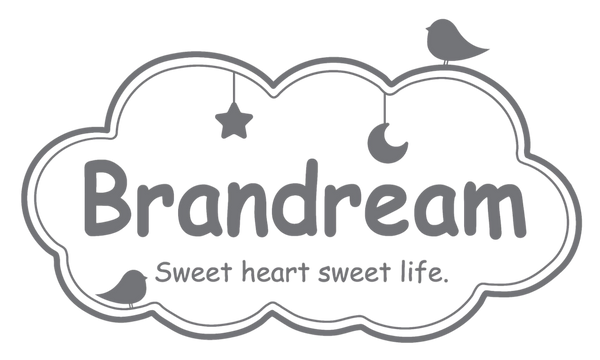The Truth About Baby Bedding Chemicals and How to Avoid Them

When it comes to your baby’s health and comfort, choosing the right bedding is more than just picking a cute design. Many parents are unaware that traditional baby bedding can contain hidden chemicals that may irritate delicate skin, disrupt sleep, or even pose health risks over time. In this blog post, we’ll uncover the truth about common chemicals found in baby bedding, their potential impact, and how to avoid them by making safe, informed choices.
Whether you're shopping for organic baby crib sheets, hypoallergenic bedding, or planning a chemical-free nursery setup, understanding what goes into your baby’s bed can make all the difference.
1. Common Chemicals Found in Baby Bedding
Baby bedding, like sheets, crib skirts, and comforters, may be treated with various chemicals during manufacturing. These substances can linger in the fabric and come into direct contact with your baby's skin.
The most common chemicals include:
- Formaldehyde – Often used to prevent wrinkles and shrinkage in sheets.
- Azo dyes – Synthetic dyes that may release carcinogenic amines.
- Pesticides and herbicides – Found in conventionally grown cotton.
- Flame retardants – Added for fire safety, but may be linked to hormonal disruption.
- Perfluorinated compounds (PFCs) – Used for water or stain resistance.
These substances are not always disclosed on product labels, making it difficult for parents to know what they're buying.
2. Why These Chemicals Are Harmful for Babies
Babies have more sensitive skin and developing immune systems, making them more vulnerable to chemical exposure. Harmful chemicals in bedding can lead to:
- Skin irritation and rashes
- Respiratory issues
- Allergic reactions
- Disrupted sleep
- Potential long-term health concerns
Because babies spend 12–16 hours a day in their cribs, reducing chemical exposure in their sleep environment is crucial for health and comfort.
3. How to Identify Safer Alternatives
When shopping for bedding, look beyond the colors and patterns. These tips will help you choose safer, non-toxic baby bedding:
Check for Certifications
Certifications can indicate that a product is free from harmful chemicals:
- GOTS (Global Organic Textile Standard) – Verifies that bedding is made from certified organic fibers and processed without harmful substances.
- OEKO-TEX® Standard 100 – Ensures every component of the product is tested for harmful substances.
- Made Safe™ – Focuses on human and environmental safety.
✅ Explore our GOTS-certified organic baby bedding collection for peace of mind.
Choose Natural Materials
Natural fibers like organic cotton, bamboo, and linen are breathable, soft, and less likely to contain harsh chemicals. Always verify that the materials are unbleached and dye-free if your baby has ultra-sensitive skin.
4. Key Features to Look for in Chemical-Free Baby Bedding
If you're trying to create a healthy sleep environment for your child, here's what to prioritize when choosing safe bedding:
- 100% organic or OEKO-TEX® certified fabrics
- No artificial dyes or synthetic fragrances
- Hypoallergenic properties
- Soft, breathable weave
- Washable with non-toxic detergents
🛏 Browse our soft and safe baby crib sheet sets, made from naturally breathable organic cotton.
5. How to Wash Baby Bedding Safely
Even the cleanest organic bedding can be affected by your detergent. Here's how to wash baby bedding safely:
- Use fragrance-free, hypoallergenic detergent
- Avoid fabric softeners and dryer sheets
- Wash new bedding before first use
- Wash separately from adult laundry
- Dry in sunlight when possible (natural disinfectant!)
Proper washing not only keeps bedding soft and clean but also ensures no residues remain that could irritate your baby's skin.
6. Building a Toxin-Free Nursery: More Than Just Bedding
To truly reduce chemical exposure in your nursery, take a holistic approach:
- Mattress matters: Choose a non-toxic crib mattress made from natural latex or organic cotton.
- Crib finish: Opt for water-based, low-VOC paints or sealants.
- Air quality: Use an air purifier and avoid air fresheners or artificial scents.
7. Top Keywords to Search and Shop Safely
If you’re browsing online or on your favorite baby store, use SEO-friendly and safety-focused search terms such as:
- Organic crib bedding sets
- Hypoallergenic baby bedding
- Chemical-free crib sheets
- Non-toxic baby bedding USA
- Safe bedding for newborns
- Best baby bedding for sensitive skin
- Breathable baby bedding materials
These keywords will help you find brands and products that value safety and sustainability.
Conclusion: Safer Bedding = Better Sleep and Peace of Mind
When you invest in chemical-free, organic baby bedding, you’re not just making a purchase—you’re creating a safer, more comfortable environment for your baby’s development. By avoiding harsh chemicals, using breathable natural fabrics, and choosing certified products, you're giving your little one the healthiest start possible.
🛒 Browse Brandream’s full range of baby bedding sets and bring natural comfort to your nursery.


